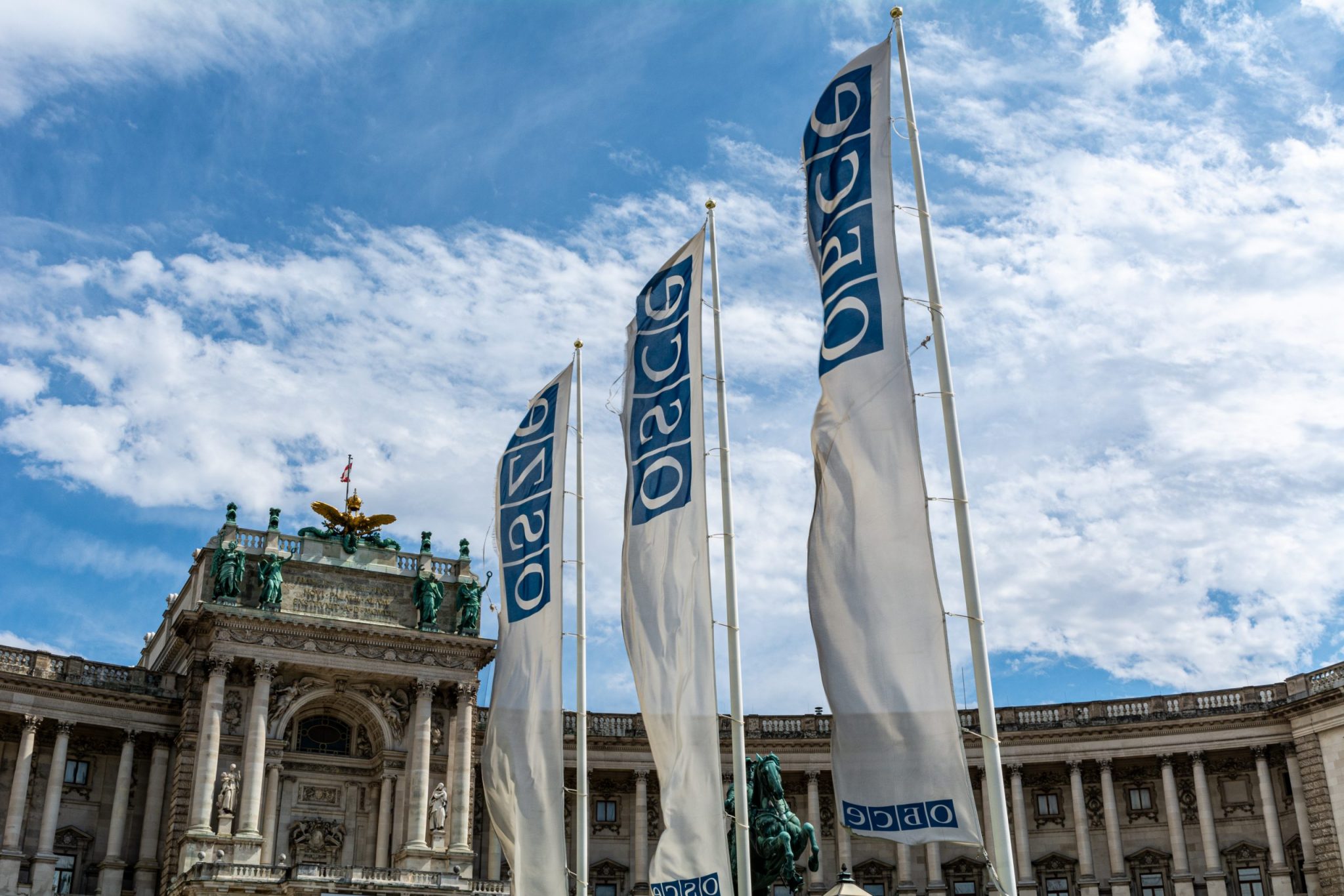The Organization for Security and Co-operation in Europe (OSCE) is uniquely situated and driven by its core values to combat corruption in all its forms, yet it remains an underused resource in the fight against strategic corruption. The Biden administration has elevated anti-corruption to the center of the domestic and international agenda, with the first-ever U.S. strategy to fight corruption and several notable deliverables at the Summit for Democracy. Attention is particularly heightened toward the transnational dimensions and the threat of strategic corruption. Strategic corruption is when one state exploits corruption as a tool of its foreign policy to undermine the sovereignty and security of another state, like using dirty money to tilt the scales in a democracy’s political system. As the OSCE works to strengthen multi-dimensional security, combatting corruption ought to be pulled to the front of its agenda. We recommend five actions to build the capabilities of and momentum for the OSCE to engage in the global fight against corruption.
Consensus and Limitations to Reform
Consensus is the mechanism of almost all action within the OSCE, meaning that decisions are made by unanimous agreement from all 57 participating states. This ensures that when the OSCE acts, it does so with support and input from all of its members. However, it also predictably leads to decisions being derailed semi-frequently, often due to extraneous reasons or spoiler efforts by members like Russia, which recently blocked an OSCE annual human rights conference. However, other consensus-driven international organizations such as the International Monetary Fund (IMF) have managed to enhance engagement on corruption with unanimous agreement by the executive board, and there is interest for such reform at the OSCE as well, as demonstrated by the Ministerial Council Decision on combatting corruption issued at its 2020 annual meeting. With the Biden administration pushing anti-corruption and most countries loath to be perceived as favoring corruption, the OSCE may be able to find common ground in anti-corruption aims. The reforms we suggest take into account the need for consensus and the turbulence of the political terrain. They are ranked in order from the least contentious to the most ambitious.
Five Recommendations for Reform
Establish Anti-Corruption Guidelines for OSCE Personnel
As a part of the institutionalization of anti-trafficking goals, the OSCE developed anti-trafficking guidelines for personnel in 2001. These guidelines advised OSCE personnel on how to identify and report on human trafficking. Anti-corruption guidelines could be created by the Office of the Co-ordinator of OSCE Economic and Environmental Activities (OCEEA) to serve a similar function by informing staff how corruption fits into the OSCE’s mission, how they can identify it in their local context, and how they can monitor and report on instances of corruption. These guidelines could also ensure that OSCE personnel do not take part inadvertently in corrupt practices within their host countries.
Expand and Make Transparent the Economic and Environmental Dimension Implementation Meeting
Once a year, the OCEEA holds an implementation meeting to review achievements by participating states in the Economic and Environmental dimension—the OSCE security dimension in which anti-corruption efforts primarily fall. This meeting lasts only a couple days, is not easily accessible to the public, rarely results in concrete reports, and does little to meaningfully engage civil society. The Human Dimension Implementation Meeting, on the other hand, lasts almost two weeks, centers civil society voices, and is publicly accessible online.
Last year, the Economic and Environmental Dimension Implementation Meeting’s primary agenda was anti-corruption and good governance, demonstrating interest in the issue, but most of the events and speeches were ironically not publicly accessible. Increasing the transparency of this implementation meeting and inviting civil society representatives to participate in the review process may incentivize participating states to better uphold their commitments.
Raise a Supplementary Item on Strategic Corruption in the Parliamentary Assembly on Anti-Corruption
The Parliamentary Assembly is a political body parallel to other OSCE structures in which lawmakers from participating states meet for discussion and to debate resolutions. It operates on majority vote rather than consensus. Supplementary items are resolutions which can be raised in committee by individual party members and later voted on by the entire assembly. While resolutions do not carry over as direct orders to the OSCE, they do express the unified will of parliamentary members and serve to prompt the OSCE into enacting organizational change.
A member of the U.S. delegation could raise a resolution on countering strategic corruption in committee and invite the Parliamentary Assembly Special Representative on Fighting Corruption to give input and co-sponsor the resolution. Such a resolution would demonstrate to the OSCE that lawmakers value and support anti-corruption work, thus motivating the OSCE to expand its future work and generating debate and collaboration on this critical issue among lawmakers.
Sponsor Anti-Corruption Field Missions
Field missions are where the OSCE excels. Each mission is built upon a tailored agreement between the OSCE and the host country, which is further ratified by consensus in the Permanent Council. All current and past field missions have operated in Eastern Europe, Southern Europe, and Central Asia. Past field missions focused on anti-corruption have supported anti-money laundering/combating the financing of terrorism compliance in Kyrgyzstan, digitized public services in Ukraine to increase transparency, and trained law enforcement in anti-corruption best practices in Serbia. Future missions could be tailored to specific problems within participating states and also monitor corrupt activity. Field missions can support states in increasing transparency and closing loopholes in their financial systems, thus fortifying them against malign influence while simultaneously improving good governance.
In the past, states have sometimes been resistant to field missions due to a perceived stigma attached to them, as well as due to the perceived risk of opening themselves up to critical scrutiny. Proposed field missions can also be derailed by a single dissenting vote on the Permanent Council. To counter this risk, and to demonstrate commitment to combating corruption to states that often block reform, Western states should volunteer to welcome field missions within their borders. These missions could focus on companies that provide bribes and professionals who launder the proceeds of corruption or invest it in Western markets such as real estate—as well as associated deficiencies in compliance with Organization for Economic Cooperation and Development and Financial Action Task Force standards.
In a similar move, the G7’s willingness to accept scrutiny of companies offering bribes and financial systems moving the proceeds of corruption helped pressure China and Russia into joining a 2018 enhancement of the IMF’s framework for engaging corruption. All OSCE member states can benefit from anti-corruption missions, but by leading the charge, Western states can prove their commitment to fighting corruption as well emphasize the value they place on the OSCE’s work.
Establish an OSCE Office and Representative on Combatting Corruption and Illicit Finance
This position, modelled off the mandate of the OSCE Representative on Freedom of the Media, could serve as a hub for coordinating all the organization’s counter-corruption activities. Currently, rule of law, good governance, and anti-corruption efforts are diffused throughout the organization and conducted through multiple offices and positions across security dimensions. The new representative would have the mandate to assist with the implementation of existing OSCE commitments on anti-corruption by coordinating internal anti-corruption work. Further, they would work closely with partner organizations, such as the Group of States against Corruption and the IMF, to avoid duplication and to tackle problems holistically.
There have been consistent calls for better integration of traditional and informal civil society groups into the OSCE’s anti-corruption approach. The representative and their office would have the power to establish relationships with civil society groups within all participating states and amplify their voices. Additionally, the representative would serve an early-warning function and be empowered to intervene in severe backsliding or blatant instances of strategic corruption by gathering information and holding bilateral discussions without having to navigate consensus. The representative would release regular reports evaluating corruption and directly advise the Permanent Council. Consensus through a Permanent Council decision would be required to establish this position and to finance the representative and their office.
Uniformly stamping out corruption decreases the opportunities that malign actors have to exploit it. This office could consolidate and strengthen the OSCE’s efforts against all forms of corruption and provide a means for the OSCE to continue evolving in its anti-corruption work.
Conclusion
As states reckon with the security vulnerabilities generated by corruption, the OSCE can and should do more to support them. The five reforms laid out in this article provide options for the OSCE to better engage in the battle against strategic corruption, depending on the extent to which consensus can be reached on the issue. Corruption poses an existential threat to democratic governance and security. It undermines many of the OSCE’s values and security goals. If the OSCE can find the political will to reform, it could play an important role in leveraging its resources and expertise across participating states to build resilience to strategic corruption.
The author would like to thank Josh Rudolph and Paul Massaro for their input and guidance on this piece.
The views expressed in GMF publications and commentary are the views of the author alone.





